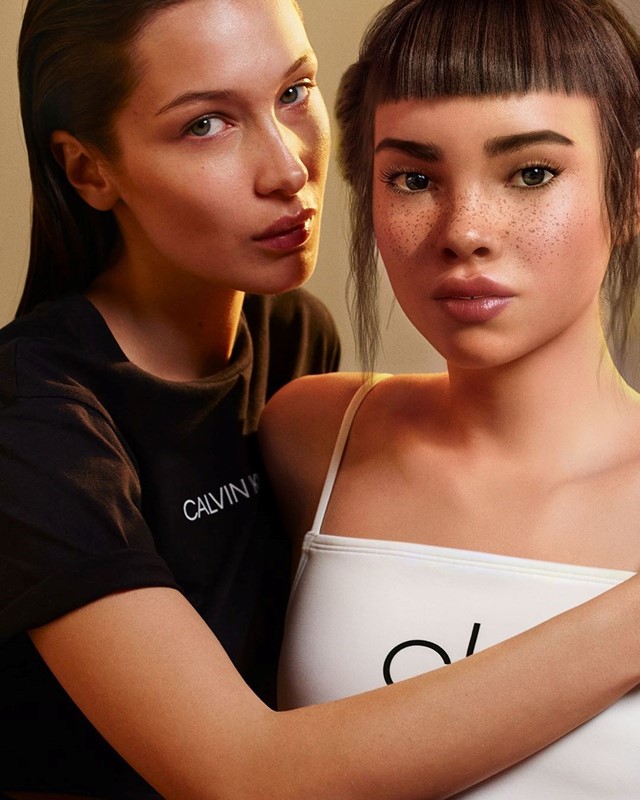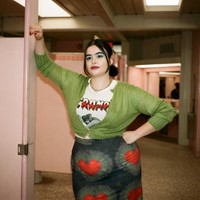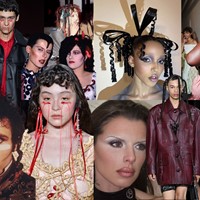Will the unreal beauty of virtual and AI-generated personas work against them when it comes to influencing us to buy into their make-up, skincare and fitness routines?
Since the Madison Avenue days of the 1950s, advertisers have worked hard to awaken the little green monster inside potential customers. Whether it’s beauty, career success, a lifestyle or a relationship, aspiration sells – and the same is true for Instagram. Unless you have the willpower of a Carthusian monk, you will have experienced how quickly an innocent, deliciously mindless scroll on social media can descend into feelings of self-doubt and insecurity. Influencers and celebrities sell us the highlight-reel version of their lives and it can be hard not to aspire to the dream, from a Disney-worthy relationship and a wardrobe full of Birkins, to a “perfect” body and poreless skin.
When it comes to our appearance, the effect of influencer content on social comparison and body image can be extreme and is leading to the rise in procedures like the BBL and the exacerbation of muscle dysmorphia in men. One study this year found that 32 per cent of Gen Z girls reported negative body image as a result of social media use, and despite what seemed like an encouraging push towards body positivity, perfection and aspiration continue to sell. This is despite the fact that a lot of what we see on social media has been artificially created – whether that’s digitally altered, surgically modified or fabricated entirely; increasingly, the influencers filling our feeds don’t even really exist.
Since pioneering virtual influencer Lil Miquela first blew up on Instagram in 2018, a slew of fresh faces from the uncanny valley has followed suit. Like their human counterparts, AI and digital influencers like @shudu.gram and @magazineluiza are securing deals with brand giants including LVMH, Samsung and Calvin Klein. Profitable, poreless and moldable, virtual influencers have been hailed as the next big thing in influencer marketing. In September of this year, Meta launched a small army of AI chatbots based on the likeness of celebrities including Kendall Jenner, Snoop Dogg and Paris Hilton.
Critics of this next generation of influencers have suggested that they are just another way to set unrealistic expectations and standards for us to aspire to, intensifying the level of perfection on our screens. But, when it comes to beauty and fitness, in particular, are we really going to be convinced to buy into a lifestyle and routine that doesn’t exist?
Two of the Meta doppelgängers stand out as being especially dubious when it comes to influencing – Charli D’Amelio’s dancing persona Coco who posts chatty GRWMs where she shares “tips and tricks” for recreating her blue eyeshadow make-up look; and Raven Ross’s Angie who posts fitness advice and smoothie recipes. Something about these digital beauty tutorials and imaginary meals feel ironic rather than aspirational. How can an influencer claim a skincare product has had a positive impact on their complexion when they don’t have real skin? Can viewing images of “perfect” bodies trigger the same mechanisms as IRL fitness inspiration if they are artificially generated?
What’s missing here is the essential ingredient that makes influencer marketing, like traditional advertising, so successful: envy. When we view aspirational content, a subconscious seed of ‘upward social comparison’ is planted. That is, we begin to compare ourselves with people who have just a bit more than us, whether that’s beauty, brains or money. With this in mind, content from AI-generated influencers is unlikely to have a real impact on you, as long as the content you’re consuming is just unrealistic enough to alienate you.
Sofia Caldeira, a postdoctoral research fellow at CICANT, Lusófona University, confirms this. “When you add a computer-generated layer to the content, it also adds another layer of distance that can diminish the impact of comparison,” she says. “When content becomes something that seems achievable, that’s when the comparison sets in.” As research has found, social comparison is only really effective when the goal you’re trying to achieve is within the realm of possibility.
The dangling carrot of aspirational content is the idea that if we lose just a little more weight, smooth out our skin texture or tweak our features, we can be just like the popular girls. Which is why we’re more likely to compare ourselves to people who are similar to us in some way. If we’re comparing ourselves with someone that doesn’t exist – who hasn’t really made their pores “disappear” with a primer or “lost weight” with a detox tea – will we experience the same emotions? As one Reddit user notes: “Can’t compete, so why even try”.
Meta knows that relatability is key. Their personas may mimic the casual authenticity through which real creators build their brands on a surface level, but credibility and trustworthiness are still the most important predictors of a creator’s influencing power. At the moment, corporate-run accounts just aren’t there yet. The company’s solution for distracting the discerning consumer? Taking a ‘blended reality’ approach. A robot without eyelids can’t sell you an eyeshadow pallet and an avatar telling you how to meal prep for a lean body isn’t convincing, but leasing celebrity likenesses and mixing the real and imaginary could soften the uncanny effect. This is a problematic solution, however. As Caldeira notes, “It always comes back to transparency.”
As long as AI influencers look more NPC than girl-next-door, it’s unlikely that they’ll have the power to elicit the same envy and physical comparison as genetically blessed It-girls. But AI-generated perfection is just one side of the coin. Levi’s recently came under fire for ‘supplementing’ real models for virtual avatars in an alleged bid to increase body inclusivity and diversity. As brands are under increasing pressure to portray diverse representations of beauty, AI models could become a loophole to tick certain boxes without having to put the work in. This is also reflected on social media.
“Big name AI influencers are often representations of people who are ethnically ambiguous. You’re getting an appropriated sense of diversity, without having to compensate diverse creators,” Caldeira notes. The outcome? “It’s twisting the original idea of social media for self-representation and creates a facade of diversity, created by tech people who already have the power.” Representation isn’t just about visuals. It’s about giving real people who don’t fit normative beauty ideals the opportunity to challenge the narrative.
As with any technology, it’s impossible to predict the impact of increasingly sophisticated AI imagery on how we see ourselves. Although the uncanniness of AI content could have an inadvertently lower impact on body image, we already know that labelling media as retouched or unrealistic isn’t all that effective. Idealised images work on a subconscious level, so the best approach might just be inspiration in moderation. What will determine impact on a wider scale is how brands and creators handle the responsibility of their influence, and where media platforms draw the lines between reality and imagination.




